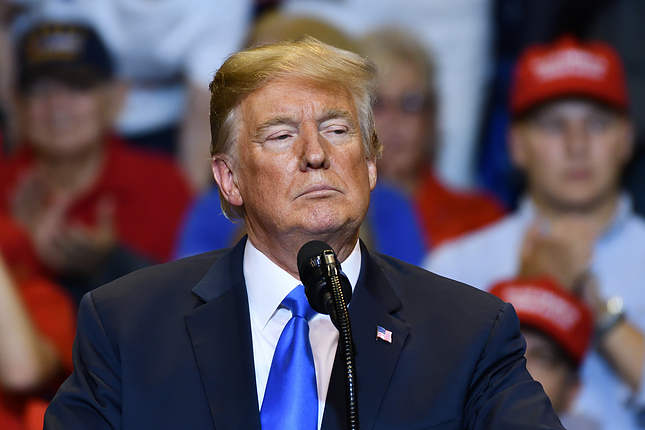Summary
-
The Bank of England (BoE) delivered a widely expected 25 bps policy rate cut to 4.75% at today's monetary policy announcement. The central bank's accompanying comments were mildly hawkish on balance, suggesting the U.K. central bank will continue to lower interest rates at only a gradual pace in the quarters ahead.
-
The BoE projected above-target inflation over much of its forecast horizon, and relatively steady GDP growth through 2025 and 2026. The central bank also highlighted the boost to growth and the inflationary implications from the recent U.K. government budget. Altogether, BoE policymakers said “a gradual approach to removing policy restraint remains appropriate.”
-
Given the overall expansionary U.K. budget, we have also nudged our U.K. GDP growth forecasts higher, to 1.7% for both 2025 and 2026. We have also revised our CPI inflation forecasts slightly higher.
-
Considering our revised forecasts, recent economic data which remain encouraging overall, and still-elevated wage and price inflation, we expect the Bank of England will continue to adopt a gradual approach to monetary easing in the quarters ahead. Specifically, we forecast 25 bps policy rate cuts in February, May, August and November next year, followed by a final 25 bps rate cut in February 2026. That would see the BoE's policy rate end 2025 at 3.75%, and reach a terminal rate of 3.50% by early 2026.
Bank of England cuts interest rates, signals gradual easing to continue
The Bank of England (BoE), in a widely expected decision, lowered its policy rate by 25 bps to 4.75% at this week's monetary policy statement. However, there were mixed messages in the BoE's accompanying statement, guidance and updated economic projections, suggesting to us that the U.K. central bank will continue to lower interest rates at only a gradual pace in the quarters ahead.
BoE policymakers voted 8-1 to lower interest rates at today's meeting, with the one dissent in favor of holding rates steady at 5.00%. In opting to lower interest rates, the BoE said:
-
There has been continued progress in disinflation, particularly as previous external shocks have abated, although remaining domestic inflationary pressures are resolving more slowly.
-
Policymakers judged “that the labor market continues to loosen, although it appears relatively tight by historical standards.”
-
Policymakers offered various scenarios for the economic outlook, and said their forecasts are based on the scenario in which a period of economic slack may be required to fully normalize pay and price-setting dynamics.
The BoE's updated economic projections sent a mildly hawkish message. The central bank upwardly revised its CPI inflation forecast for the end of 2024 to 2.7% and raised it forecast for the end of 2026 to 2.2% (both above the inflation target), while forecasting 1.8% by the end of 2027 (slightly below the inflation target). The central bank projected relatively steady U.K GDP growth of 1.5% in 2025 and 1.4% in 2026. That said, it's worth keeping in mind these projections are based off a market-implied policy rate path which is slightly lower than that which currently prevails, given that the market's rate expectation have moved higher in recent days.
Importantly, the Bank of England also highlighted the potential growth and inflationary effects of last week's U.K. government budget announcement. The BoE said the announced measures are provisionally expected to boost the level of GDP by around 0.75% at their peak in a year’s time, relative to their August projections. The Budget is provisionally expected to boost CPI inflation by just under 0.5 percentage points at the peak, reflecting both the indirect effects of the smaller margin of excess supply and direct impacts from the Budget measures.
Based on this assessment, BoE policymakers wrapped up by saying “a gradual approach to removing policy restraint remains appropriate. Monetary policy will need to remain restrictive for sufficiently long until the risks to inflation returning sustainably to the 2% target in the medium term have dissipated further. The Committee continues to monitor closely the risks of inflation persistence and will decide the appropriate degree of monetary policy restrictiveness at each meeting.” We see little in the central bank's guidance that would suggest an acceleration in Bank of England easing any time soon. That message was reinforced by BoE Governor Bailey, who said we “need to make sure inflation stays close to target, so we can't cut interest rates too quickly or by too much.”
Recently, the stock market has experienced high levels of volatility. If you are thinking about participating in fast moving markets, please take the time to read the information below. Wells Fargo Investments, LLC will not be restricting trading on fast moving securities, but you should understand that there can be significant additional risks to trading in a fast market. We've tried to outline the issues so you can better understand the potential risks. If you're unsure about the risks of a fast market and how they may affect a particular trade you've considering, you may want to place your trade through a phone agent at 1-800-TRADERS. The agent can explain the difference between market and limit orders and answer any questions you may have about trading in volatile markets. Higher Margin Maintenance Requirements on Volatile Issues The wide swings in intra-day trading have also necessitated higher margin maintenance requirements for certain stocks, specifically Internet, e-commerce and high-tech issues. Due to their high volatility, some of these stocks will have an initial and a maintenance requirement of up to 70%. Stocks are added to this list daily based on market conditions. Please call 1-800-TRADERS to check whether a particular stock has a higher margin maintenance requirement. Please note: this higher margin requirement applies to both new purchases and current holdings. A change in the margin requirement for a current holding may result in a margin maintenance call on your account. Fast Markets A fast market is characterized by heavy trading and highly volatile prices. These markets are often the result of an imbalance of trade orders, for example: all "buys" and no "sells." Many kinds of events can trigger a fast market, for example a highly anticipated Initial Public Offering (IPO), an important company news announcement or an analyst recommendation. Remember, fast market conditions can affect your trades regardless of whether they are placed with an agent, over the internet or on a touch tone telephone system. In Fast Markets service response and account access times may vary due to market conditions, systems performance, and other factors. Potential Risks in a Fast Market "Real-time" Price Quotes May Not be Accurate Prices and trades move so quickly in a fast market that there can be significant price differences between the quotes you receive one moment and the next. Even "real-time quotes" can be far behind what is currently happening in the market. The size of a quote, meaning the number of shares available at a particular price, may change just as quickly. A real-time quote for a fast moving stock may be more indicative of what has already occurred in the market rather than the price you will receive. Your Execution Price and Orders Ahead In a fast market, orders are submitted to market makers and specialists at such a rapid pace, that a backlog builds up which can create significant delays. Market makers may execute orders manually or reduce size guarantees during periods of volatility. When you place a market order, your order is executed on a first-come first-serve basis. This means if there are orders ahead of yours, those orders will be executed first. The execution of orders ahead of yours can significantly affect your execution price. Your submitted market order cannot be changed or cancelled once the stock begins trading. Initial Public Offerings may be Volatile IPOs for some internet, e-commerce and high tech issues may be particularly volatile as they begin to trade in the secondary market. Customers should be aware that market orders for these new public companies are executed at the current market price, not the initial offering price. Market orders are executed fully and promptly, without regard to price and in a fast market this may result in an execution significantly different from the current price quoted for that security. Using a limit order can limit your risk of receiving an unexpected execution price. Large Orders in Fast Markets Large orders are often filled in smaller blocks. An order for 10,000 shares will sometimes be executed in two blocks of 5,000 shares each. In a fast market, when you place an order for 10,000 shares and the real-time market quote indicates there are 15,000 shares at 5, you would expect your order to execute at 5. In a fast market, with a backlog of orders, a real-time quote may not reflect the state of the market at the time your order is received by the market maker or specialist. Once the order is received, it is executed at the best prices available, depending on how many shares are offered at each price. Volatile markets may cause the market maker to reduce the size of guarantees. This could result in your large order being filled in unexpected smaller blocks and at significantly different prices. For example: an order for 10,000 shares could be filled as 2,500 shares at 5 and 7,500 shares at 10, even though you received a real-time quote indicating that 15,000 shares were available at 5. In this example, the market moved significantly from the time the "real-time" market quote was received and when the order was submitted. Online Trading and Duplicate Orders Because fast markets can cause significant delays in the execution of a trade, you may be tempted to cancel and resubmit your order. Please consider these delays before canceling or changing your market order, and then resubmitting it. There is a chance that your order may have already been executed, but due to delays at the exchange, not yet reported. When you cancel or change and then resubmit a market order in a fast market, you run the risk of having duplicate orders executed. Limit Orders Can Limit Risk A limit order establishes a "buy price" at the maximum you're willing to pay, or a "sell price" at the lowest you are willing to receive. Placing limit orders instead of market orders can reduce your risk of receiving an unexpected execution price. A limit order does not guarantee your order will be executed -" however, it does guarantee you will not pay a higher price than you expected. Telephone and Online Access During Volatile Markets During times of high market volatility, customers may experience delays with the Wells Fargo Online Brokerage web site or longer wait times when calling 1-800-TRADERS. It is possible that losses may be suffered due to difficulty in accessing accounts due to high internet traffic or extended wait times to speak to a telephone agent. Freeriding is Prohibited Freeriding is when you buy a security low and sell it high, during the same trading day, but use the proceeds of its sale to pay for the original purchase of the security. There is no prohibition against day trading, however you must avoid freeriding. To avoid freeriding, the funds for the original purchase of the security must come from a source other than the sale of the security. Freeriding violates Regulation T of the Federal Reserve Board concerning the extension of credit by the broker-dealer (Wells Fargo Investments, LLC) to its customers. The penalty requires that the customer's account be frozen for 90 days. Stop and Stop Limit Orders A stop is an order that becomes a market order once the security has traded through the stop price chosen. You are guaranteed to get an execution. For example, you place an order to buy at a stop of $50 which is above the current price of $45. If the price of the stock moves to or above the $50 stop price, the order becomes a market order and will execute at the current market price. Your trade will be executed above, below or at the $50 stop price. In a fast market, the execution price could be drastically different than the stop price. A "sell stop" is very similar. You own a stock with a current market price of $70 a share. You place a sell stop at $67. If the stock drops to $67 or less, the trade becomes a market order and your trade will be executed above, below or at the $67 stop price. In a fast market, the execution price could be drastically different than the stop price. A stop limit has two major differences from a stop order. With a stop limit, you are not guaranteed to get an execution. If you do get an execution on your trade, you are guaranteed to get your limit price or better. For example, you place an order to sell stock you own at a stop limit of $67. If the stock drops to $67 or less, the trade becomes a limit order and your trade will only be executed at $67 or better. Glossary All or None (AON) A stipulation of a buy or sell order which instructs the broker to either fill the whole order or don't fill it at all; but in the latter case, don't cancel it, as the broker would if the order were filled or killed. Day Order A buy or sell order that automatically expires if it is not executed during that trading session. Fill or Kill An order placed that must immediately be filled in its entirety or, if this is not possible, totally canceled. Good Til Canceled (GTC) An order to buy or sell which remains in effect until it is either executed or canceled (WellsTrade® accounts have set a limit of 60 days, after which we will automatically cancel the order). Immediate or Cancel An order condition that requires all or part of an order to be executed immediately. The part of the order that cannot be executed immediately is canceled. Limit Order An order to buy or sell a stated quantity of a security at a specified price or at a better price (higher for sales or lower for purchases). Maintenance Call A call from a broker demanding the deposit of cash or marginable securities to satisfy Regulation T requirements and/or the House Maintenance Requirement. This may happen when the customer's margin account balance falls below the minimum requirements due to market fluctuations or other activity. Margin Requirement Minimum amount that a client must deposit in the form of cash or eligible securities in a margin account as spelled out in Regulation T of the Federal Reserve Board. Reg. T requires a minimum of $2,000 or 50% of the purchase price of eligible securities bought on margin or 50% of the proceeds of short sales. Market Makers NASD member firms that buy and sell NASDAQ securities, at prices they display in NASDAQ, for their own account. There are currently over 500 firms that act as NASDAQ Market Makers. One of the major differences between the NASDAQ Stock Market and other major markets in the U.S. is NASDAQ's structure of competing Market Makers. Each Market Maker competes for customer order flow by displaying buy and sell quotations for a guaranteed number of shares. Once an order is received, the Market Maker will immediately purchase for or sell from its own inventory, or seek the other side of the trade until it is executed, often in a matter of seconds. Market Order An order to buy or sell a stated amount of a security at the best price available at the time the order is received in the trading marketplace. Specialists Specialist firms are those securities firms which hold seats on national securities exchanges and are charged with maintaining orderly markets in the securities in which they have exclusive franchises. They buy securities from investors who want to sell and sell when investors want to buy. Stop An order that becomes a market order once the security has traded through the designated stop price. Buy stops are entered above the current ask price. If the price moves to or above the stop price, the order becomes a market order and will be executed at the current market price. This price may be higher or lower than the stop price. Sell stops are entered below the current market price. If the price moves to or below the stop price, the order becomes a market order and will be executed at the current market price. Stop Limit An order that becomes a limit order once the security trades at the designated stop price. A stop limit order instructs a broker to buy or sell at a specific price or better, but only after a given stop price has been reached or passed. It is a combination of a stop order and a limit order. These articles are for information and education purposes only. You will need to evaluate the merits and risks associated with relying on any information provided. Although this article may provide information relating to approaches to investing or types of securities and investments you might buy or sell, Wells Fargo and its affiliates are not providing investment recommendations, advice, or endorsements. Data have been obtained from what are considered to be reliable sources; however, their accuracy, completeness, or reliability cannot be guaranteed. Wells Fargo makes no warranties and bears no liability for your use of this information. The information made available to you is not intended, and should not be construed as legal, tax, or investment advice, or a legal opinion.
Recommended Content
Editors’ Picks

EUR/USD hovers around 1.0800 on Fed's decision
EUR/USD returned to the 1.0800 price zone after the Federal Reserve announced its decision to cut the benchmark interest rate by 25 bps as widely anticipated. Chair Jerome Powell's remarks put mild pressure on the US Dollar.

USD/JPY retreats from weekly highs as FOMC delivers 25 bps rate trim
USD/JPY hovers around 153.80 after the Fed broadly met market expectations on November's rate call. The Fed delivered a follow-up quarter-point cut on Thursday; markets now bet on the odds of a December three-peat.

Gold regains $2,700 with Fed’s announcement
Gold extends its recovery following Wednesday's sharp decline and trades above $2,700, as the US Dollar eases following the Federal Reserve's decision to cut rates by 25 bps. Powell's speech revolved around Trump's victory.

Ethereum Price Forecast: ETH eyes $3,366 as open interest growth could fuel quest for new all-time high
Ethereum (ETH) is up nearly 8% on Thursday and could reach a new all-time high before year-end following increasing investor demand for the top altcoin. This is visible in ETH's open interest growth and increasing Ethereum exchange-traded funds (ETF) inflows.

Outlook for the markets under Trump 2.0
On November 5, the United States held presidential elections. Republican and former president Donald Trump won the elections surprisingly clearly. The Electoral College, which in fact elects the president, will meet on December 17, while the inauguration is scheduled for January 20, 2025.

Best Forex Brokers with Low Spreads
VERIFIED Low spreads are crucial for reducing trading costs. Explore top Forex brokers offering competitive spreads and high leverage. Compare options for EUR/USD, GBP/USD, USD/JPY, and Gold.